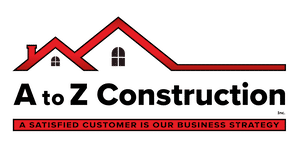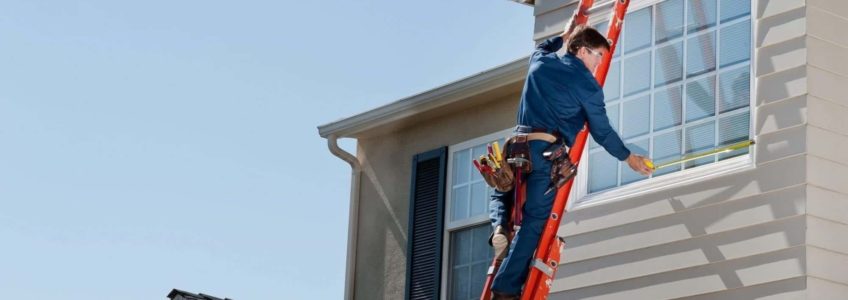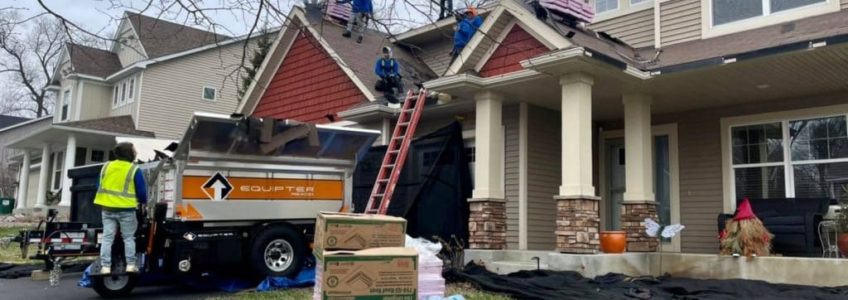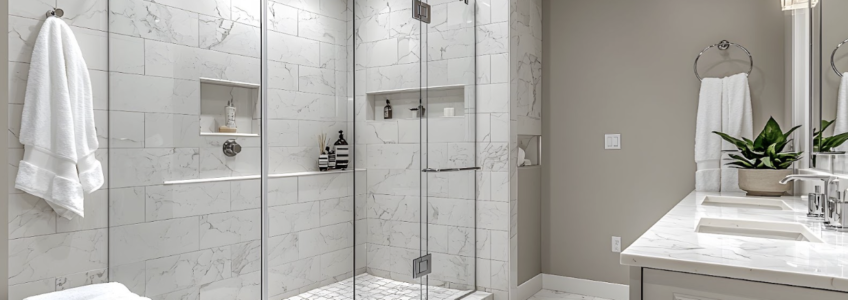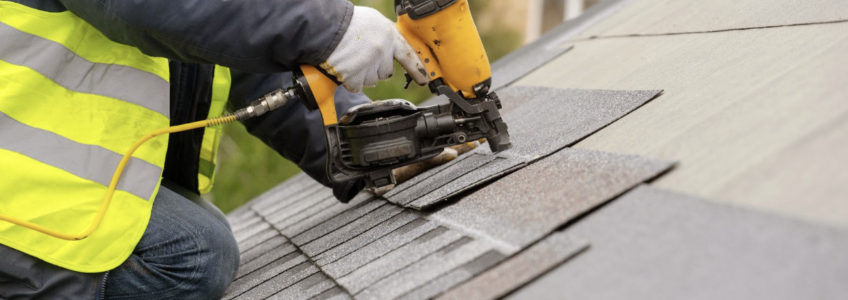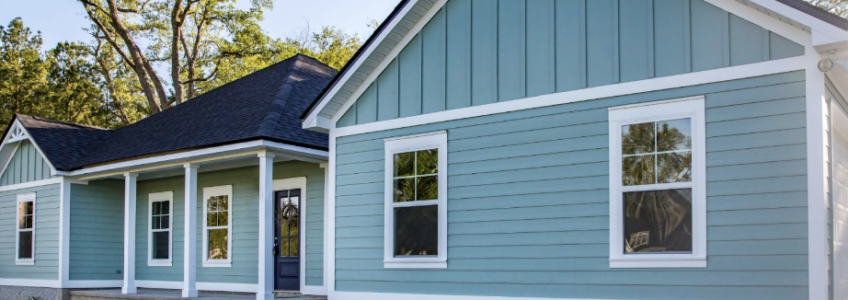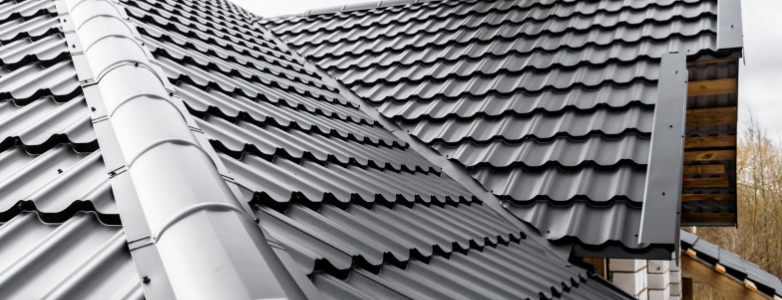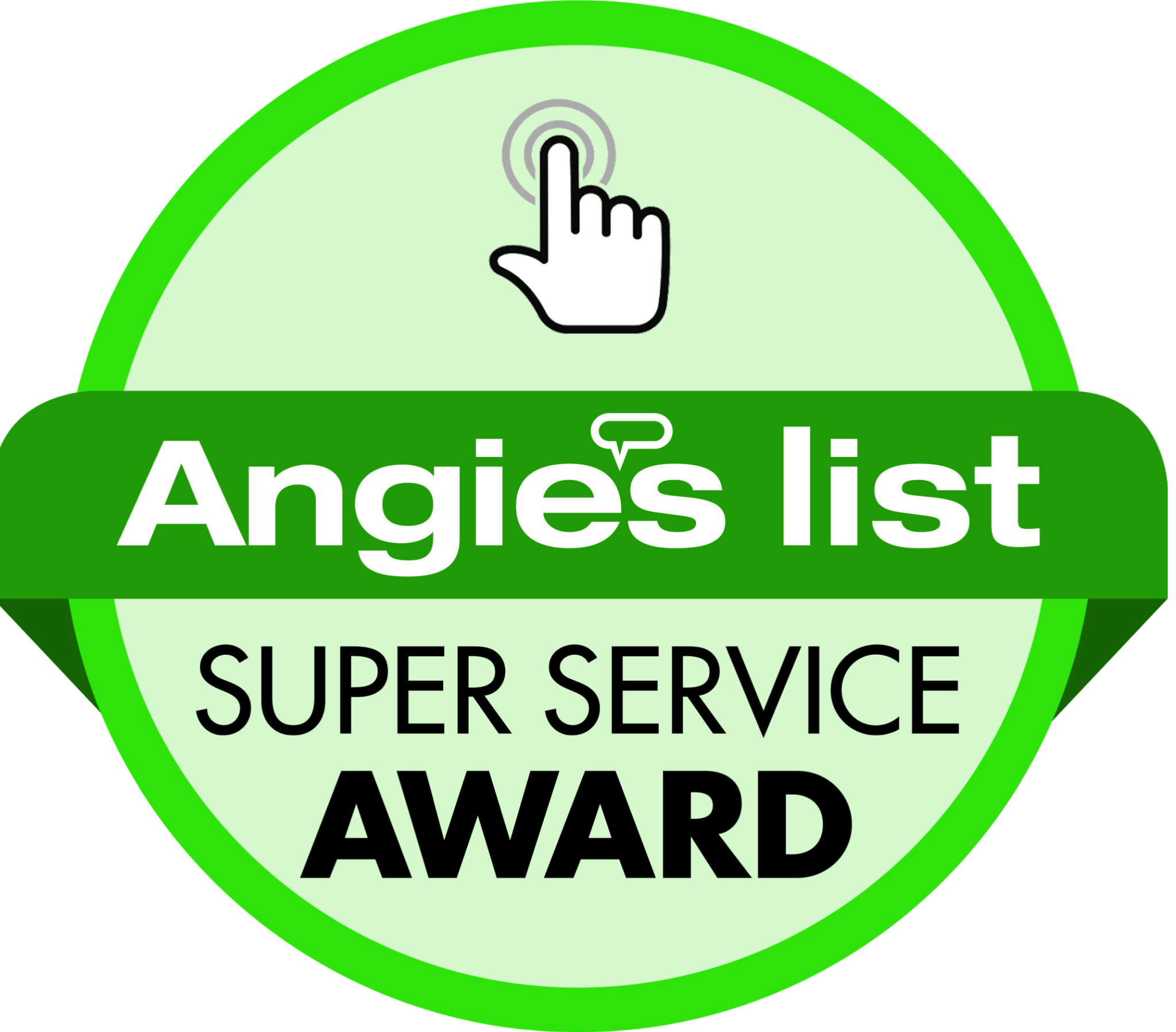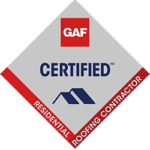Protect Your Home Investment: Choose Roofing Companies Near Me
When searching for roofing companies near me, you’re not just looking for convenience but, most importantly, you’re also protecting one of your most valuable assets: your home. At A to Z Construction Inc., we understand the importance of a strong, reliable roof. Since 2004, our family-owned and operated Minnesota company has delivered expert roof repair and replacement services to homeowners seeking quality, professionalism, and peace of mind.
How a New Roof Protects Your Home Investment
Your roof does more than keep you dry, it directly impacts your property value and financial investment. A professional shingle roof installation can significantly boost your home’s resale value. Here’s how:
- Improved Curb Appeal: A new shingle roof instantly enhances your home’s aesthetic.
- Increased Energy Efficiency: Modern materials help regulate indoor temperature and reduce utility bills.
- Structural Protection: A well-installed roof prevents leaks and water damage.
- Home Inspection Readiness: New roofing eases concerns during home sales and appraisals.
- Insurance Benefits: Updated roofs can lead to lower premiums and better coverage.
- Buyer Confidence: Prospective buyers are more likely to purchase a home with a recently repaired or replaced roof.
- Long-Term Savings: New roofs reduce the need for frequent repairs, saving you money over time.
Searching Roofing Companies Near Me? Choose A to Z Construction
Whether you’re dealing with storm damage or natural wear and tear, timely roof repair is crucial. When it comes to finding the best “roofing companies near me,” trust a contractor that combines local knowledge, expert craftsmanship, and years of experience. Your roof, and your home’s value, deserve nothing less. Choosing an experienced contractor like A to Z Construction Inc. ensures your investment is well-protected and professionally handled. To schedule an inspection or get a free estimate, call A to Z Construction Inc. today at 763-424-1884 or fill out our online form. Let us help you protect your home, your loved ones, and your investment. Call us today!
Curious about how roof damage starts? One early sign is granular loss, which can lead to more significant problems if not addressed. Learn more about granular loss and what it means for your roof here.
Energy Efficient Windows for a House Interior Renovation Upgrade
If you’re planning a house interior renovation, upgrading to energy-efficient windows is a smart, value-boosting decision. At A to Z Construction Inc., we bring over 20 years of experience as a trusted general contractor in Minnesota. Whether you’re remodeling a bathroom, repairing a roof, or modernizing your home’s interiors, we prioritize expert craftsmanship and long-term performance. One of the most overlooked yet most impactful renovation decisions is your choice of windows. Let A to Z Construction Inc. save you money and upgrade your home’s appearance with energy efficient window installations.
7 Benefits of Installing Energy Efficient Windows
Energy efficient windows do more than just improve aesthetics; they provide long-term savings and comfort. Here are several key benefits of choosing energy efficient windows for your home:
- Lower Energy Bills: These windows help maintain indoor temperatures, reducing heating and cooling costs.
- Improved Home Comfort: Better insulation keeps your space cooler in summer and warmer in winter.
- Environmental Impact: Reduced energy consumption lowers your home’s carbon footprint.
- UV Protection: Energy-efficient glass helps protect furniture, flooring, and décor from fading.
- Condensation Control: These windows minimize condensation, reducing the risk of mold and mildew.
- Noise Reduction: Enhanced insulation helps block outside noise, improving indoor tranquility.
- Increased Home Value: Modern, efficient windows are attractive to buyers and improve resale value.
Ready for a House Interior Renovation? Call A to Z Construction!
Combining window upgrades with other essential home improvements such as roof repair creates a well-rounded renovation that boosts your home’s efficiency and durability. At A to Z Construction Inc., we provide expert guidance on the best products for your needs and deliver precise installation that meets today’s highest standards. To schedule an inspection or get a free estimate, contact A to Z Construction Inc. today at 763-424-1884 or fill out our online form.
If you’re ready to upgrade your windows as part of your house interior renovation, explore our door and window contractor services to see how we can help transform your space. As a family-owned and operated business since 2004, we take pride in helping Minnesota homeowners achieve their renovation goals with quality, care, and professionalism. Contact us today to schedule your consultation!
Roofing Contractors in Hennepin For Your Charming Colonial Home
Colonial-style homes are known for their timeless charm, symmetry, and classic appeal. This makes them highly sought after, but preserving their historical beauty takes thoughtful planning, especially when it comes to exterior updates like roofing and siding. At A to Z Construction Inc., we are expert roofing contractors in Hennepin who understand how to blend durability with design when working on historic and traditionally styled homes.
Why Choose A to Z Construction to Update Your Home
As a family-owned Minnesota company serving homeowners since 2004, we at A to Z Construction Inc. pride ourselves on delivering high-quality craftsmanship, honest communication, and beautiful results. Whether you need a full roof replacement or a small repair, we’re not just general contractors – we’re problem solvers who treat your home like our own. Here’s what sets us apart from other Hennepin contractors:
- Knowledgeable and Experienced. In business since 2004, we have over 20 years of trusted local experience. We have not only the skills and knowledge to get the job done right, but we’re part of the community and understand what makes Hennepin unique.
- We provide custom solutions for both modern and historic homes. When updating a colonial home, material and color choices can make or break your curb appeal. Colonial exteriors benefit from traditional, clean-lined options, such as symmetrical roofing, muted color palettes, and materials that stand the test of time. Roofing choices like architectural shingles in neutral shades (charcoal, slate, or brown) can elevate a colonial home’s elegance while ensuring weather resilience.
- Timely, respectful service and clear communication. We are on-site for the field adjustment to make sure items are not overlooked, we negotiate with insurance companies for a fair settlement with accurate pricing, we process insurance checks that need mortgage company endorsements, order materials, permits, schedule installation labor and invoice for final payment from insurance companies.
- We are licensed, insured, and family-operated.
Need Hennepin Roofing Contractors? Call A to Z Construction Today
Ready to protect and enhance your property? Trust the roofing contractors at A to Z Construction Inc. for expert installation with classic style in mind. As your trusted local roofing contractors, we help you choose not only the right shingle or metal roof option, but also offer guidance on how it pairs with your home’s siding. For more insight, check out our post on how often you should replace siding in Minnesota. For more information and to request a free estimate, contact us today at 763-424-1884 or by filling out our online form.
Tile Installers Near Me: Lavish Bathroom Projects from A to Z
When it comes to elevating your bathroom from ordinary to extraordinary, few design elements make an impact quite like tile. From bold patterns to serene spa-like aesthetics, the right tile can completely transform your space! If you’re searching for tile installers near me who deliver high-quality craftsmanship and timeless results, look no further than A to Z Construction Inc!
As a trusted general contractor serving Minnesota since 2004, A to Z Construction has built a reputation for delivering detail-oriented work on every project, big or small. Our family-owned business offers full-service tile installation and repair, whether you’re dreaming of a complete bathroom remodel or simply upgrading your shower walls or flooring.
Why Choose A to Z Construction for Your Bathroom Project?
When it comes to upgrading your bathroom, tile is more than just functional – it’s a design statement. Trends like oversized tiles, bold geometric patterns, and textured finishes can add personality and luxury to your bathroom. But great design needs expert installation to bring it to life. Here’s why you should choose A to Z Construction for your bathroom tile project:
- Over 20 years of tile installation experience. In business since 2004, our experienced tile installers bring precision, creativity, and professionalism to every project.
- Family-owned, fully licensed, and insured.
- Personalized design guidance with exceptional customer service. Your bathroom should reflect your style just as much as the rest of your home. We work with a wide range of materials like ceramic, porcelain, stone, and more to create a space that reflects your vision and meets your practical needs.
- Reliable timelines and quality workmanship. At A to Z we are involved every step of the way! We’re on-site for the field adjustment to make sure items are not overlooked, we negotiate with insurance companies for a fair settlement with accurate pricing, we process insurance checks that need mortgage company endorsements, order materials, permits, schedule installation labor and invoice for final payment from insurance companies.
Searching for Tile Installers Near Me? Call A to Z Construction
When you search for tile installers near me, choose a team that values integrity, quality, and customer satisfaction. You can explore more about our tile installation services here, and see how we can help you transform your bathroom with custom tile work that fits your taste and budget! To get a free estimate on your bathroom project, contact A to Z Construction Inc. today at 763-424-1884 or by filling out our online form.
Experience Spa-Like Luxury with a Shower Remodel Near Me
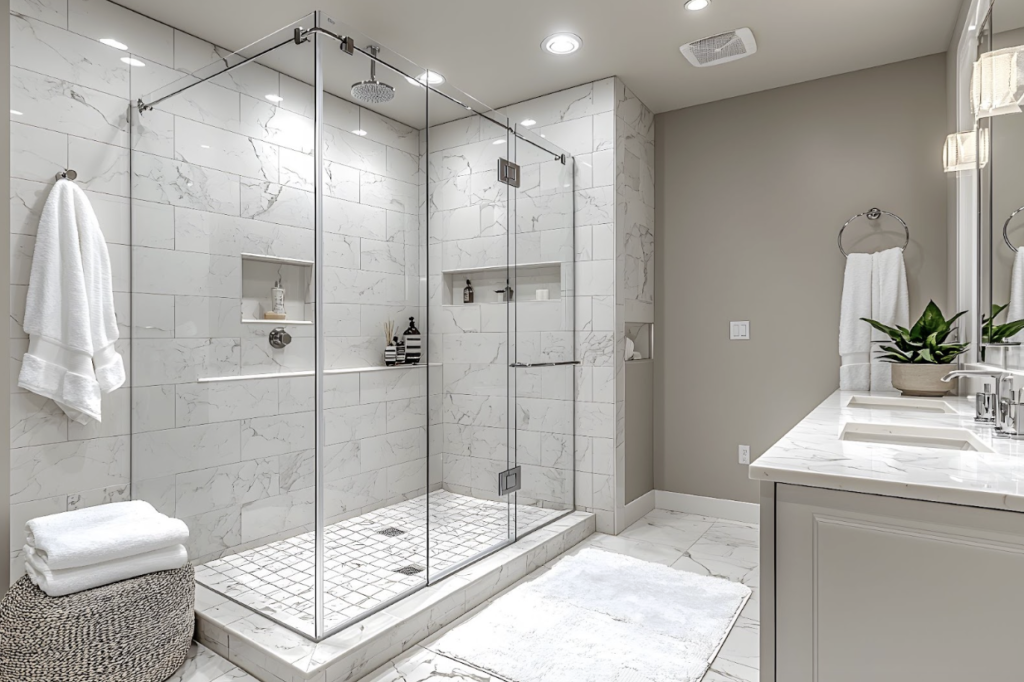
Are you ready to elevate your bathroom with a luxurious, spa-like feel? A well-designed shower can transform your bathroom into a serene retreat, and at A to Z Construction Inc., we specialize in making that transformation a reality. Whether you’re considering a full shower remodel near me or just a simple shower bath remodel, we can help you create a space that’s both functional and visually stunning.
Design Your Shower Remodel with A to Z Construction
With over 20 years of experience, A to Z Construction Inc. is a family-owned business that understands the value of intentional design. Our team works closely with you to craft a customized shower space that meets your needs, matches your style, and maximizes the functionality of your bathroom. From sleek, modern showers to classic, timeless designs, we provide tailored solutions that fit every aesthetic and budget. Here’s what sets us apart:
- Design Your Dream Shower: A shower remodel is more than just replacing old fixtures—it’s about transforming your space into a place where you can relax and unwind. Whether you prefer a luxurious rain shower, a convenient walk-in option, or a stylish combination of both, our experts will guide you through selecting the best features for your space.
- Customizable Options: We also offer options like built-in shelving for added storage, custom tile work for a sophisticated look, and high-end showerheads to provide the ultimate bathing experience.
- Best of Both Worlds: Our shower bath remodel services allow you to combine a luxurious shower and bath setup that maximizes your bathroom’s potential.
- Quality Materials, Expert Craftsmanship: If you’re looking for a fresh, functional space, we’ll ensure your shower remodel is completed with precision and care. We’ve been in business for over two decades, so our experts know the best methods and materials to ensure your shower stands the test of time.
Call A to Z Construction Today!
At A to Z Construction Inc., we pride ourselves on our commitment to quality craftsmanship and timely, professional service. If you’re searching for a shower remodel near me, reach out to our experts! Contact us today at (763) 424-1884, or reach out for a consultation, and let us help you design the spa-like bathroom you’ve always dreamed of!
Storm Damage Repair in Maple Grove: Restoring Your Home
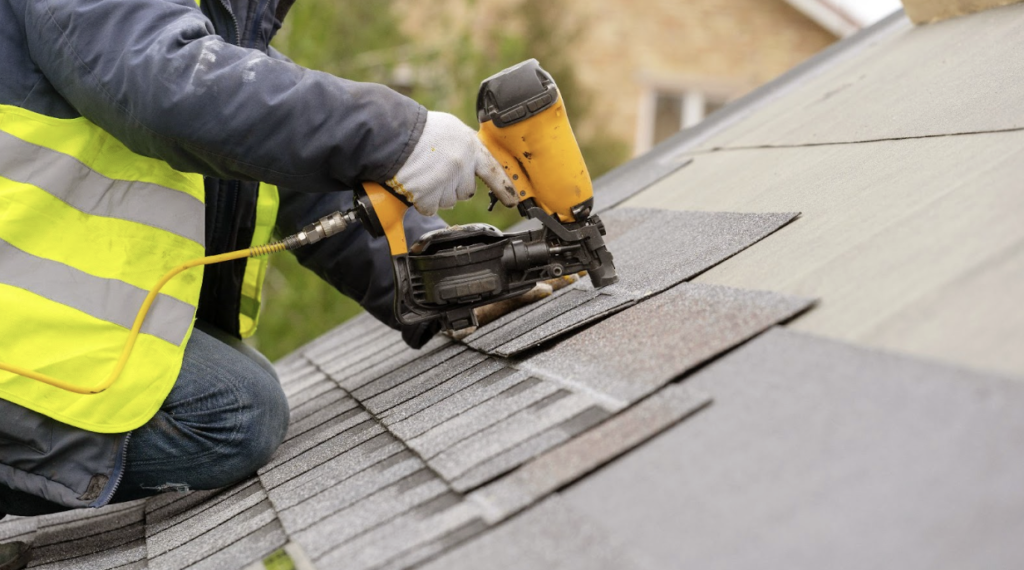
Severe weather can strike unexpectedly, leaving behind significant damage to your home. From hail and wind to fallen trees, a fast response is essential to restoring your home to its original condition. At A to Z Construction Inc., we specialize in comprehensive storm damage repair in Maple Grove, ensuring that your home gets the care it needs after a storm.
Why Choose A to Z Construction for Storm Damage Repair in Maple Grove
As a family-owned business founded in 2004, we understand the importance of providing reliable, professional repair services. We understand your house is not only a secure home for your family, but is your biggest financial asset. For over two decades, A to Z has been committed to offering premier repair services to residents of Maple Grove. Here’s what sets us apart:
- Our team is dedicated to offering high-quality workmanship, whether the damage is minor or extensive. We offer a full range of storm damage repair services, including roof inspections, siding repairs, and window replacements. Our goal is to restore your home efficiently and with minimal disruption to your daily life.
- When it comes to roof repair, it’s crucial to address issues quickly. A compromised roof can lead to further damage to your home’s interior, such as water leaks, mold, and structural concerns. Our expert roofing team has the experience and tools needed to assess the damage thoroughly and provide a solution that will last for years to come.
- At A to Z Construction Inc., we pride ourselves on our transparency and dedication to customer satisfaction. We work closely with insurance companies to ensure that your repair process goes smoothly and without unexpected costs. Whether you’re dealing with roof damage, siding issues, or other storm-related repairs, our team is here to help guide you through every step of the process.
Contact A to Z Construction Today!
If you’re in need of storm damage repair in Maple Grove, look no further than A to Z Construction Inc. We have the expertise and dedication to restore your home to its pre-storm condition. Call us at (763) 424-1884, or reach out today for a consultation, and let us help you protect your home from the lasting effects of storm damage.
Boost Your Home’s Curb Appeal with a Vinyl Siding Upgrade
First impressions can oftentimes make all the difference. This means when it comes time to sell your home, not only do you want it to be in tip-top shape, you want it to look great, too! This means making sure your siding isn’t damaged or in need of an upgrade. In Minnesota, this is doubly important, as the broad spectrum of weather climates we experience can impact the exterior of your home more extremely than in milder climates. If you’re in need of siding installation, vinyl siding is a great upgrade choice that will boost the curb appeal and value of your home!
Why Choose Vinyl Siding?
When it comes time to upgrade your siding, there are a lot of materials to choose from. In Minnesota, it’s important to consider how the different weather climates can affect your siding. So what makes vinyl a great choice?
- First, vinyl siding is deemed a suitable material for Minnesota’s climate due to its resilience in extreme temperatures and outstanding durability. Read more about how Minnesota’s climate affects your siding.
- Secondly, it’s easy to clean and the upkeep is low-maintenance. You can get it clean with a garden hose, and it will naturally resist warping, fading, rot, and corrosion, which makes it a great choice when considering Minnesota’s different weather extremes.
- It’s durable and cost-effective. When compared to other siding options like wood, vinyl is relatively affordable. Pair that with its longevity and durability, and you’re set for decades!
- Versatility is an important quality to consider when choosing siding. Vinyl siding comes in many colors and styles so your home remains uniquely yours.
- Finally, vinyl siding can increase the value of your home! When it’s time to go to market, the durability and minimal upkeep are big selling points. Plus, it looks great, which increases the curb appeal and overall value of your home, making it a top choice for siding options in Minnesota.
A to Z Construction – Siding Installation Experts
If you’re a homeowner, you know that your home is one of your biggest assets. That’s why A to Z Construction is determined to provide high-quality work, fair prices, and the professionalism every customer deserves for their most important investment. When it’s time to upgrade your siding, choose a company that’s been named the #1 Minnesota roofing contractor by hundreds of satisfied clients!
A to Z Construction has been helping Minnesota families upgrade their homes with superior service, expert craftsmanship, and a commitment to quality repairs and remodeling. To start your siding installation project, call us at 763-424-1884. For a free roof inspection, please fill out our online form. We look forward to helping you turn the vision you have for your dream home into a reality.
Metal Roofing Minneapolis: The Ultimate Solution for Your Home
Whether you’ve experienced roof damage from a storm or it’s just time for an upgrade, there are a lot of materials to consider when thinking about your new roof. If you’re looking for options when it comes to roofing in Minneapolis, consider installing a metal roof with A to Z Construction! We are a top-rated Minnesota roofing company consisting of skilled professionals with years of experience in the construction industry.
Marvelous Metal Roofing | Minneapolis
When it’s time for a new roof, many people don’t consider metal roofing, but a metal roof offers many advantages over asphalt and other more familiar options:
- Durability and Longevity: Manufactured from sturdy materials like steel and aluminum, a metal roof is highly resistant to damage from the extreme weather climates found in Minnesota, including torrential rain, hail, wind, lightning, snow, ice, and relentless sunlight. This durability means an increased life span. Most homeowners with a metal roof don’t need to replace it in their lifetime, unlike with asphalt roofs, which require upgrades every decade or so.
- Low-maintenance: It’s what every homeowner wants to hear, right? Metal roofs require nearly no upkeep.
- Energy-Efficient, Eco-Friendly: If you’re trying to keep costs down and make an eco-friendly decision, consider metal roofing. It’s typically made out of recyclable materials, and a metal roof is well-insulated, meaning your energy bill could decrease up to 40%! Great for the planet and your wallet.
- A metal roof looks great! In the past, people have steered clear of metal roofing options because of lack of curb appeal, but the industry is evolving. Metal roofs can mimic the look of any other roofing material, including asphalt shingles and clay tiling!
Choose A to Z – It’s as Easy as 1, 2, 3!
When it comes time to hire a contractor for your new roof, you want to go with a team that provides both expertise and experience. That’s why more and more Minneapolis residents are choosing A to Z Construction for all their roofing needs. We are experts in metal roofing installation, committed to excellence and transparent communication. Your home is a reflection of you, which is why we take pride in offering personalized roofing solutions that fit your needs and budget.
To get more information, you can call us at 763-424-1884. For a free roof inspection, please fill out our online form. When it comes to roofing contractors, choose the best: choose A to Z Construction. It really is that easy!
What Are the Advantages & Disadvantages of Vinyl Siding?
Vinyl siding is a popular choice for homeowners who want a low-maintenance exterior. It is made from various colors and styles of PVC (polyvinyl chloride) resin. Vinyl siding has been around since the 1950s and has become increasingly popular due to its durability and affordability.
There are several advantages to using vinyl siding. First, it is very low-maintenance and requires no painting or staining. It is also resistant to rot, insect damage, and moisture, making it a great choice for homes in harsh weather conditions. Additionally, vinyl siding is available in various colors and styles so that homeowners can choose the perfect look for their homes. However, there are also some disadvantages, such as vinyl siding can crack or fade over time, and it may not be as environmentally friendly as other options.
What Is Vinyl Siding?

Vinyl siding is a popular exterior cladding material used in residential and commercial buildings. It is made from polyvinyl chloride (PVC) resin and other additives that provide durability, color, and texture. Vinyl siding is available in various colors, styles, and profiles, making it a versatile and affordable option for homeowners and builders.
One of the key advantages of vinyl siding is its low maintenance requirements. Unlike wood siding, vinyl siding does not need to be painted or stained regularly and is resistant to rot, insects, and moisture damage. Vinyl siding is also easy to clean with a hose and a mild detergent, making it an attractive choice for busy homeowners.
In addition to its low maintenance requirements, vinyl siding is relatively easy to install. It can be installed over most existing surfaces, including wood, brick, and stucco, and it does not require special tools or equipment. Vinyl siding is also lightweight and easy to handle, which can reduce installation time and labor costs.
However, there are also some disadvantages to vinyl siding. One of the main concerns is its environmental impact. Vinyl siding is made from non-renewable resources and can release toxic chemicals during manufacturing and disposal. Additionally, vinyl siding can fade and become brittle, especially in extreme weather conditions.
Overall, vinyl siding is a popular and affordable option for homeowners and builders who want a low-maintenance, durable, and versatile exterior cladding material. However, weighing the advantages and disadvantages before hiring a siding contractor is important.
Advantages of Vinyl Siding
Vinyl siding is a popular choice for homeowners due to its many advantages. Here are some key benefits of updating your home with vinyl siding.
Cost Effectiveness
One of the main advantages of vinyl siding is its affordability. Vinyl is less expensive than other siding materials, such as wood or brick, making it a cost-effective option for homeowners on a budget. Additionally, vinyl siding requires less maintenance than other materials, saving homeowners money in the long run.
Low Maintenance
Vinyl siding is low maintenance, another reason it is a popular choice for homeowners. Unlike wood or brick, vinyl siding does not require painting or staining, so it will not fade or peel over time. Additionally, vinyl is moisture-resistant, so it will not rot or warp like wood. This means homeowners do not have to worry about regular maintenance or siding repairs.
Durability
Vinyl siding is also durable and long-lasting. It can withstand extreme weather conditions that can cause storm damage, such as high winds, heavy rain, and hail, making it a good choice for homes in harsh climates. Additionally, vinyl siding is resistant to fading, cracking, and peeling, so it will maintain its appearance for many years.
Variety of Styles and Colors
Finally, vinyl siding offers various styles and colors, making it easy to find a look that fits your home’s aesthetic. Vinyl siding can be made to look like wood, stone, or other materials, so homeowners can achieve the look they want without the added cost or maintenance of those materials.
In summary, vinyl siding is a cost-effective, low-maintenance, durable, and versatile option for homeowners looking to update their home’s exterior.
Disadvantages of Vinyl Siding
Vinyl siding has many benefits, but it also has some disadvantages. Here are some of the most significant drawbacks of vinyl siding.
Environmental Concerns
Vinyl siding is made from PVC, a type of plastic. PVC is not biodegradable and can release harmful chemicals when it is burned. Additionally, the production of PVC requires a significant amount of energy, which contributes to greenhouse gas emissions.
Potential for Damage
Vinyl siding can be damaged by strong winds, hail, and other extreme weather conditions. If the siding is not installed correctly, it can also warp or buckle. Additionally, vinyl siding is not fire-resistant and can melt or burn if exposed to high temperatures.
Lower Resale Value
Vinyl siding is one of the most affordable types of siding, but it can also lower the resale value of a home. Some home buyers prefer more traditional siding materials like wood or brick, and may be less willing to pay a premium for a home with vinyl siding. Additionally, vinyl siding can fade over time, making a home look less attractive.
Overall, while vinyl siding has many benefits, it also has some drawbacks that homeowners should consider before deciding.
Is Vinyl Siding Right for Your Home?
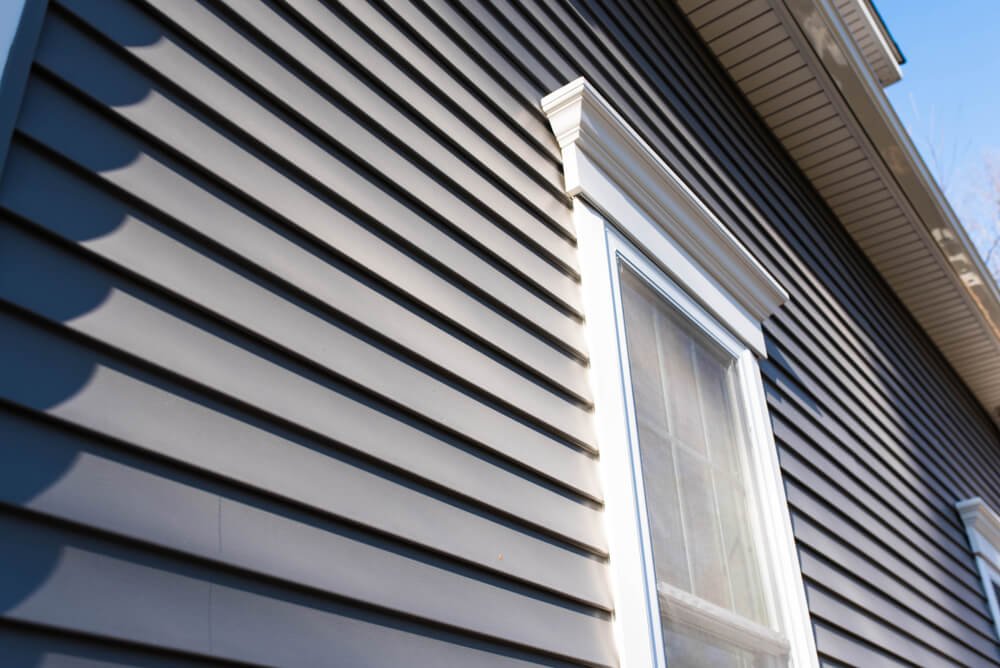
Vinyl siding has its advantages and disadvantages, and ultimately, the decision to use it will depend on the homeowner’s specific needs and preferences.
On the positive side, vinyl siding is relatively affordable, low-maintenance, and available in various colors and styles. It is also durable and can last for several decades with proper care. Additionally, vinyl siding can help improve a home’s energy efficiency by providing insulation and reducing heat loss.
However, there are also some potential drawbacks to using vinyl siding. For example, it can crack or fade over time and may not be as visually appealing as other materials, such as wood or brick. Additionally, vinyl siding can be prone to moisture damage if not installed correctly, and it may not be as environmentally friendly as some other options.
Overall, vinyl siding can be a good choice for homeowners looking for an affordable, low-maintenance option that will last for many years. However, those prioritizing aesthetics or environmental sustainability may want to consider other materials. Contact A to Z Construction today to learn about our vinyl siding options.
Storm Damage Roof Repair Process: What Can I Expect?
In the aftermath of a storm, the last thing you want to worry about is the state of your roof. Yet, it’s often one of the areas most susceptible to damage. Understanding the storm damage roof repair process can alleviate some of the stress associated with this situation. Let’s walk through what happens from start to finish.
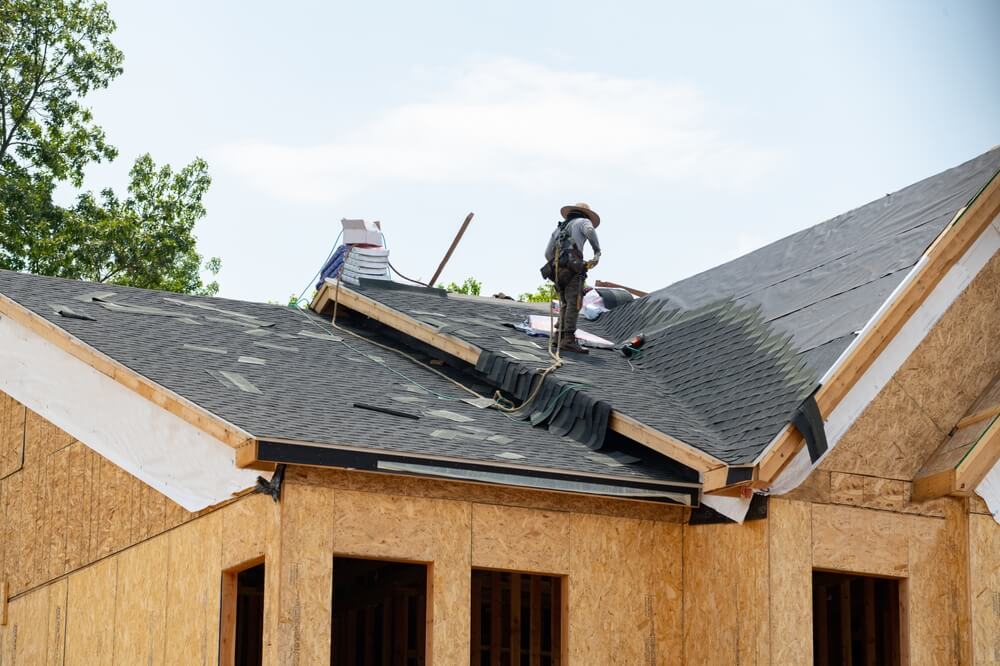
Assessing the Damage
When you notice damage to your roof after a storm, the first step is to assess the extent of the damage. This involves inspecting the roof for any missing shingles, cracks, or leaks. It’s crucial to document the damage thoroughly, as this will be essential when filing an insurance claim.
Filing the Claim
Once you’ve documented the damage, the next step is to file a claim with your insurance company. This typically involves contacting your insurance agent and providing them with the necessary information and documentation. They will then send an adjuster to assess the damage and determine if the claim is valid.
Approval and Payment
If the insurance company approves the claim, they will issue a check to cover the cost of repairs. This check is typically made out to you and your contractor or construction company. Once you receive the check, you can provide it to your contractor to initiate the repair process.
The Repair Process
With the necessary funds in hand, your contractor can begin the repair process. This typically starts with cleaning the area around the roof to ensure a safe working environment. A netting system may be set up to protect the sides of your home during the tear-off process.
Tear-Off and Underlayment
The next step is to remove the damaged shingles and any underlying materials. This process, known as tear-off, involves stripping away the old roofing materials to prepare for the installation of new ones. Once the roof is cleared, the contractor will install new underlayment to provide an additional layer of protection against the elements.
Reshingling
With the underlayment in place, it’s time to reshingle the roof. New shingles will be carefully installed to ensure a secure and watertight seal. This step not only restores the appearance of your roof but also enhances its durability and longevity.
Cleanup and Inspection
Once the new roof is installed, the contractor will thoroughly clean up the area, removing any debris and ensuring that your property looks as good as new. A magnet may be used to pick up any stray nails to prevent injury and damage to your property.
Conclusion
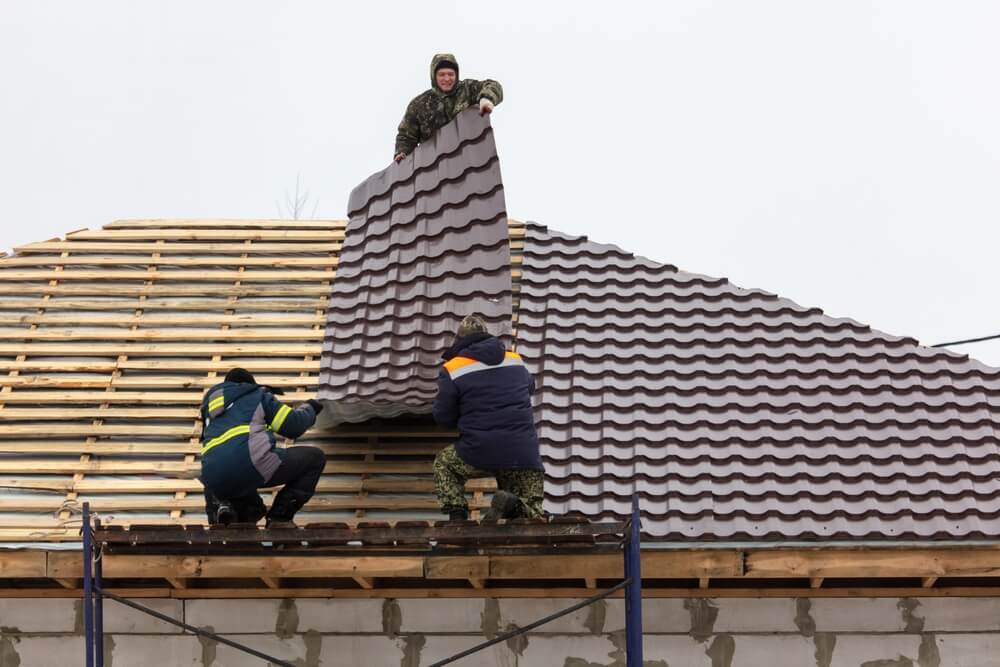
Experiencing storm damage to your roof can be a stressful experience, but knowing what to expect during the repair process can help ease some of that stress. By following these steps, you can restore your roof to its former glory and protect your home from further damage. If you find yourself in need of assistance, don’t hesitate to contact A to Z Construction today for reliable and professional roof repair services.


